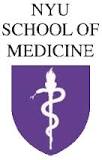Promoting Safe Use of Pediatric Liquid Medications
| Status: | Recruiting |
|---|---|
| Healthy: | No |
| Age Range: | Any - 8 |
| Updated: | 12/27/2018 |
| Start Date: | July 2012 |
| End Date: | December 2019 |
| Contact: | H. Shonna Yin, MD, MS |
| Email: | yinh02@med.nyu.edu |
| Phone: | 212-562-2821 |
Promoting Safe Use of Pediatric Liquid Medications: A Health Literacy Approach
Variable and poor-quality drug labeling has been cited as a leading cause of medication
errors and adverse drug events, especially in the context of low health literacy. This is a
particularly important issue in pediatrics as more than half of US children are exposed to
one or more outpatient medications in a given week, and studies suggest that over half of
caregivers make errors when dosing liquid medications for children. Our study objective is to
identify evidence-based strategies for labeling and dosing prescription and over-the-counter
pediatric liquid medications in order to promote safe, appropriate use, as well as to inform
state and federal policy standards. We hypothesize that a health literacy-informed labeling
and dosing strategy will result in improved parent ability to administer medications
prescribed to their young children.
errors and adverse drug events, especially in the context of low health literacy. This is a
particularly important issue in pediatrics as more than half of US children are exposed to
one or more outpatient medications in a given week, and studies suggest that over half of
caregivers make errors when dosing liquid medications for children. Our study objective is to
identify evidence-based strategies for labeling and dosing prescription and over-the-counter
pediatric liquid medications in order to promote safe, appropriate use, as well as to inform
state and federal policy standards. We hypothesize that a health literacy-informed labeling
and dosing strategy will result in improved parent ability to administer medications
prescribed to their young children.
Administering pediatric medications is frequently a difficult task for parents, in large part
due to reliance on liquid formulations requiring the use of confusing, and often complex,
measurement devices. Use of different units of measurement (milliliter, teaspoon, and/or
tablespoon units) with variations in associated abbreviations, and the variability of
measuring devices (type, markings, capacity), are sources of parent confusion. Low health
literacy is linked to caregiver misunderstanding. Despite high error and utilization rates
for outpatient pediatric medications, research examining strategies to prevent medication
errors have focused largely on adults and on inpatient populations.
The ability to understand pediatric medication instructions is a critical health literacy and
patient safety concern. Recently, the US Food and Drug Administration recognized the
importance of this issue and released new guidelines to promote improved labeling and
measuring devices for pediatric liquid medications. While these recommendations are an
essential first step, evidence is needed to support the development of 'best practices' for
designing optimal instructions and devices, especially for parents with limited literacy
and/or limited English proficiency.
Our study objective is to identify evidence-based 'best practices' for labeling and dosing
prescription and over-the-counter pediatric liquid medications in order to promote safe,
appropriate use. A series of experiments will first be conducted to examine the efficacy of
specific dosing and measurement strategies for improving parent understanding and use of
pediatric liquid medications, including examining the impact of milliliter-only label
instructions and devices, as well as the potential role for pictographic dosing diagrams.
Findings will be merged with existing evidence-based health literacy 'best practices' for
medication labeling to develop a comprehensive, patient-centered strategy for the labeling
and dosing of pediatric liquid medications. The effectiveness of the patient-centered
strategy will then be evaluated as part of a randomized controlled trial among English and
Spanish-speaking parents whose children have been newly prescribed oral liquid antibiotics in
a pediatric emergency department setting. Secondary aims of the study include extending the
body of literature on health literacy and pediatric medication use, and generating a policy
road map for achieving and implementing labeling and dosing standards for pediatric liquid
medications.
due to reliance on liquid formulations requiring the use of confusing, and often complex,
measurement devices. Use of different units of measurement (milliliter, teaspoon, and/or
tablespoon units) with variations in associated abbreviations, and the variability of
measuring devices (type, markings, capacity), are sources of parent confusion. Low health
literacy is linked to caregiver misunderstanding. Despite high error and utilization rates
for outpatient pediatric medications, research examining strategies to prevent medication
errors have focused largely on adults and on inpatient populations.
The ability to understand pediatric medication instructions is a critical health literacy and
patient safety concern. Recently, the US Food and Drug Administration recognized the
importance of this issue and released new guidelines to promote improved labeling and
measuring devices for pediatric liquid medications. While these recommendations are an
essential first step, evidence is needed to support the development of 'best practices' for
designing optimal instructions and devices, especially for parents with limited literacy
and/or limited English proficiency.
Our study objective is to identify evidence-based 'best practices' for labeling and dosing
prescription and over-the-counter pediatric liquid medications in order to promote safe,
appropriate use. A series of experiments will first be conducted to examine the efficacy of
specific dosing and measurement strategies for improving parent understanding and use of
pediatric liquid medications, including examining the impact of milliliter-only label
instructions and devices, as well as the potential role for pictographic dosing diagrams.
Findings will be merged with existing evidence-based health literacy 'best practices' for
medication labeling to develop a comprehensive, patient-centered strategy for the labeling
and dosing of pediatric liquid medications. The effectiveness of the patient-centered
strategy will then be evaluated as part of a randomized controlled trial among English and
Spanish-speaking parents whose children have been newly prescribed oral liquid antibiotics in
a pediatric emergency department setting. Secondary aims of the study include extending the
body of literature on health literacy and pediatric medication use, and generating a policy
road map for achieving and implementing labeling and dosing standards for pediatric liquid
medications.
Phase II of Study (Effectiveness Trial)
Inclusion Criteria:
- parent/legal guardian of a child age 8 or less
- parent/legal guardian age 18 or greater
- child presenting for care in the emergency department
- child prescribed short course liquid antibiotic
- parent English or Spanish-speaking
- parent responsible for administering medication to child
Exclusion Criteria:
- parent visual acuity worse than 20/50 (Rosenbaum Pocket Screener)
- parent with uncorrectable hearing impairment
- prior participation in study involving medication dosing
We found this trial at
4
sites
550 1st Ave
New York, New York 10016
New York, New York 10016
(212) 263-7300

Principal Investigator: Hsiang Yin, MD
Phone: 212-562-2821
New York University School of Medicine NYU School of Medicine has a proud history that...
Click here to add this to my saved trials
Emory University School of Medicine Emory University School of Medicine has 2,359 full- and part-time...
Click here to add this to my saved trials
Stanford University School of Medicine Vast in both its physical scale and its impact on...
Click here to add this to my saved trials
Click here to add this to my saved trials

